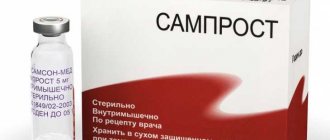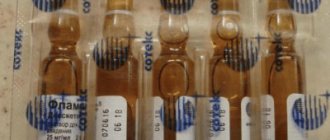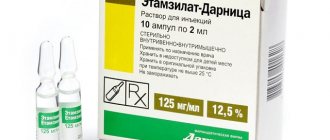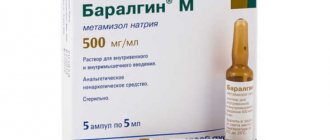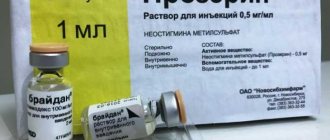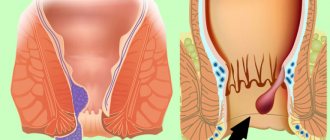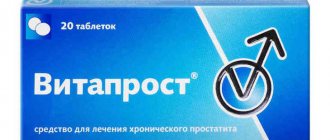Algeron is the first drug in the class of prolonged interferons produced in Russia. But the drug differs from imported drugs of this group in the structure of the molecule. According to WHO, the medicine created by domestic specialists has no analogues in the world.
Unlike other drugs based on interferons (IFN), Algeron was developed for the sole purpose of treating chronic viral hepatitis C (abbreviated as CHCV). Before the synthesis and confirmation of the effectiveness of targeted drugs with direct antiviral action, the combination of interferon and ribavirin was considered the main treatment regimen for chronic hepatitis C. But even now, the peculiarities of the course of the disease in some patients require supplementation of therapy with the use of IFN.
The use of a Russian drug not only reduces the final cost of the full course of therapy. The medicine is produced by a domestic manufacturer, which can participate in various government programs aimed at providing patients with an effective drug for the treatment of hepatitis C free of charge. The effectiveness of Algeron was studied throughout the country with the participation of leading experts in the field of hepatology. At the same time, not only the effect of the drug on various HCV genotypes was assessed. The medicine was compared with expensive imported analogues. As a result, we came to the conclusion that the treatment of hepatitis C with Algeron and ribavirin is not inferior in terms of results to taking foreign long-acting IFN.
Release form
Algeron is produced in the form of a solution for subcutaneous administration: transparent, from light yellow to colorless (in sterile three-component syringes made of neutral colorless glass, 0.4, 0.5, 0.6, 0.8 or 1 ml, 1 syringe each in blister packs made of polymer film, 1 or 4 packs in a cardboard box; in colorless glass bottles of 1 ml, 1 or 4 bottles in blister packs, 1 pack in a cardboard box).
Compound
Algeron is available in the form of a solution for subcutaneous administration. One milliliter contains 200 mcg of the active component, which is pegylated interferon alpha-2b , and excipients:
- sodium acetate trihydrate (2.617 mg);
- glacial acetic acid to pH 5.0;
- sodium chloride (8 mg);
- polysorbate-80 (0.05 mg);
- disodium edetate dihydrate (0.056 mg);
- water for injection (up to 1 ml).
Pharmacological properties
Pharmacodynamics
Cepeginterferon alpha-2b is formed by attaching a polymer structure, polyethylene glycol (PEG) with a molecular weight of 20 kDa, to the interferon alpha-2b molecule.
The biological effects of the drug Algeron are caused by interferon alpha-2b. Interferon alpha-2b is produced biosynthetically using recombinant DNA technology and is produced by a strain of the bacterium Escherichia coli, into which the gene for human interferon alpha-2b has been introduced using genetic engineering methods.
Interferons have antiviral, immunomodulatory and antiproliferative effects.
The antiviral effect of interferon alpha-2b is due to its binding to specific cellular receptors, which in turn triggers a complex mechanism of sequential intracellular reactions, including the induction of certain enzymes (protein kinase R, 2'-5'-oligoadenylate synthetase and Mx proteins).
As a result, transcription of the viral genome is suppressed and the synthesis of viral proteins is inhibited.
Pegylated interferon alpha preparations cause an increase in the concentration of effector proteins, such as serum neopterin and 2'5'-oligoadenylate synthetase. When studying the pharmacodynamics of the drug Algeron® with a single administration to volunteers, a dose-dependent increase in the serum concentration of neopterin was noted, the maximum increase of which (Cmax) was achieved after 48 hours.
When the drug Algeron was administered once a week at a dose of 1.5 mcg/kg, the serum concentration of neopterin in patients with chronic hepatitis C was maintained at a constantly high level.
Just like unmodified interferon alpha-2b, Algeron® had antiviral activity in in vitro experiments.
Pharmacokinetics
In preclinical experiments, it was shown that pegylation of the interferon alpha-2b molecule leads to a significant slowdown in absorption from the injection site, an increase in the volume of distribution, and a decrease in clearance.
The decrease in clearance leads to a more than 10-fold increase in the duration of the terminal half-life (T1/2) compared to unmodified interferon alfa-2b (32 hours versus 2.2 hours). Elimination of Algeron® occurred within >153 hours (6.5 days).
When Algeron was administered subcutaneously once a week as part of combination therapy for chronic hepatitis C, a dose-dependent gradual increase in drug concentration was observed up to 8 weeks, after which no further accumulation was observed up to 12 weeks of therapy with Algeron.
General information
The active substance of Algeron is one of the varieties of human interferon, the only reliable means for the treatment of hepatitis C. Its chronic course progresses to liver cirrhosis and hepatocellular carcinoma. This chemical compound synthesizes a substance in virus-infected cells that interferes with their vital functions.
Interferon also stimulates the processes of immune intracellular defense, in which killer cells, macrophages, lymphocytes and its other components participate.
Algeron is a Russian analogue of foreign drugs of the same principle of action, Pegintron and Pegasis. Possessing the same level of therapeutic properties, it has a lower cost. The healing substance is produced using a bioengineering method - interferon is produced by strains of bacteria.
Directions for use and dosage
According to the instructions for use, Algeron is administered subcutaneously into the thigh or anterior abdominal wall. The drug cannot be administered intravenously. It is recommended to alternate injection sites. A doctor with experience in treating patients with hepatitis C should prescribe the drug and monitor its further use.
Recommended dosage regimen for Algeron (0.0015 mg/kg once a week) in combination with ribavirin (minimum syringe volume/weight/single dose/volume of solution):
Syringe 0.4 ml:
- 40 kg: 0.06 mg/0.3 ml;
- 41-46 kg: 0.07 mg/0.35 ml;
- 47-53 kg: 0.08 mg/0.4 ml.
Syringe 0.5 ml:
- 54-60 kg: 0.09 mg/0.45 ml;
- 61-66 kg: 0.1 mg/0.5 ml.
Syringe 0.6 ml:
- 67-73 kg: 0.11 mg/0.55 ml;
- 74-80 kg: 0.12 mg/0.6 ml.
Syringe 0.8 ml:
- 81-86 kg: 0.13 mg/0.65 ml;
- 87-93 kg: 0.14 mg/0.7 ml;
- 94-100 kg: 0.15 mg/0.75 ml;
- 101-106 kg: 0.16 mg/0.8 ml.
1 ml syringe:
- 107-113 kg: 0.17 mg/0.85 ml;
- 114-120 kg: 0.18 mg/0.9 ml;
- 121-126 kg: 0.19 mg/0.95 ml;
- 127-133 kg: 0.2 mg/1 ml.
Each bottle/syringe with solution is intended for single use only. The solution contained in the vial/syringe should not be mixed or administered in parallel with other medications.
Clinical trial results
Test results regarding the effectiveness of Algeron for various HCV genotypes are shown in the table.
| Genotype | Number of cured patients |
| 1 | 68% |
| 2 and 3 | 83% |
| 4 | 67.9% |
We studied the effectiveness of triple therapy using Algeron, simeprevir and ribavirin in patients diagnosed with HCV genotype 1 who had not previously received AVT. 37 infected people (21 women and 16 men) took part. SVR was achieved in 32 patients; therapy was ineffective in 2 patients. Three patients interrupted the course. In one patient who did not complete treatment, interim tests for viremia were negative. Side effects were expected and were grade 1–2 according to CTCAE.
Comparison of the effectiveness and safety of Algeron and Pegintron
Data from a comparative study of the effectiveness of the two drugs are shown in the table.
| PegIntron | Algeron |
| Negative PCR result at week 4 | |
| 41% | 47% |
| Negative PCR at 12 weeks | |
| 88% | 93% |
| No result | |
| 12% | 7% |
Contraindications
The use of Algeron in the treatment of hepatitis is unacceptable in the following cases:
- Detection of severe liver pathologies. This may be autoimmune hepatitis or cirrhosis of the liver, which developed against the background of infection with the human immunodeficiency virus, or liver failure.
- Pathologies of the nervous system, in particular epilepsy.
- Complicated kidney pathologies.
- Hereditary lactose metabolism disorders.
- Pathologies of the cardiovascular system that are not amenable to drug therapy.
- Detection of cancer.
- Intolerance to the components of Algeron or Ribavirin, which are used in combination.
- Disorders of the thyroid gland, if it is impossible to compensate for them with medication.
- Anemia and other blood pathologies.
- If the patient is under 18 years of age at the time of hepatitis C diagnosis. B
- Pregnancy or breastfeeding.
In addition, the drug is not prescribed to men whose sexual partners are pregnant. It is important for women of childbearing age to use available methods of contraception during treatment and for 7 months after completion.
special instructions
The safety profile of Algeron (monotherapy or in combination with ribavirin) for patients under 18 years of age, as well as for patients after liver or other organ transplantation, has not been studied.
Prescribing Algeron to patients with severe mental disorders (including patients with a history of such disorders) is possible only after a thorough individual examination and appropriate treatment of the mental disorder.
Patients with a history of depression should be monitored for signs of depression during therapy and for six months after its completion. If symptoms increase or persist, especially depression, aggressive behavior or suicidal intentions, it is necessary to discontinue Algeron and ensure timely examination by a psychiatrist.
For heart disease, an ECG is recommended before and during treatment. Anemia caused by taking ribavirin can aggravate the course of cardiovascular diseases. If the condition worsens, therapy is discontinued.
If bronchospasm, urticaria, anaphylactic reactions, or angioedema occur, Algeron should be immediately discontinued and appropriate treatment should be prescribed immediately. For a transient rash, discontinuation of therapy is not required.
With reduced renal function, as well as patients over the age of 50 years, when using Algeron with ribavirin, the condition should be carefully monitored for the possible development of anemia.
Before starting therapy, all patients are recommended to undergo a renal function test. Combination therapy is not prescribed for creatinine clearance less than 50 ml/min.
If liver failure develops, treatment is discontinued.
Also during therapy it is necessary to take into account the development of the following disorders/conditions:
- Fever: For persistent fever, other causes must be excluded;
- Hydration: it is recommended to ensure adequate hydration (to avoid the development of arterial hypotension associated with a decrease in fluid volume in the body);
- Lung diseases: with the development of respiratory symptoms, incl. cough, fever and shortness of breath, a chest x-ray is necessary;
- Autoimmune disorders: In some cases, autoantibodies may appear (in most cases, if there is a predisposition to the development of autoimmune disorders). For psoriasis and sarcoidosis, Algeron is prescribed with caution; in case of exacerbation, discontinuation of therapy is possible;
- Infections (viral/bacterial/fungal): in cases of severe complications, Algeron is canceled;
- Changes in the organ of vision: in cases of complaints, an ophthalmological examination should be performed;
- Changes in the periodontium and teeth: regular examinations by a dentist are recommended (due to the high probability of developing pathological changes in the periodontal tissues and teeth);
- Condition of the thyroid gland: hypothyroidism or hyperthyroidism may develop. In cases where the activity of thyroid-stimulating hormone cannot be maintained at a normal level, Algeron is discontinued;
- Pancreatitis: if symptoms of pancreatitis appear, therapy is discontinued;
- Laboratory tests: standard clinical and biochemical blood tests must be performed before prescribing a course, as well as during therapy.
The use of Algeron may be accompanied by the development of ulcerative and hemorrhagic and/or ischemic colitis within 12 weeks from the start of treatment. Typical signs of colitis manifestation: the presence of blood in the stool, abdominal pain, fever. If such complaints appear, Algeron is immediately canceled.
If during therapy there is a development of dizziness, weakness, confusion, drowsiness, you should stop driving vehicles and working with mechanisms and machines.
Side effects
When treated with Algeron in the doses recommended by the instructions, including in combination with ribavirin, side effects were mild or moderate and did not imply cessation of the course of therapy. The most frequently reported side effects were:
- headaches, increased irritability, depression, emotional lability;
- nausea and diarrhea;
- dry cough;
- pain in the joints, as well as muscle pain;
- skin reactions, expressed in the form of increased dryness, peeling of the skin, itching and the appearance of rashes on them;
- local reactions at the site of drug administration;
- general symptoms (fever, asthenia, etc.);
- disorders of the lymphatic and circulatory systems;
- changes in laboratory parameters.
In general, the frequency of unwanted side reactions depends on the dosage in which Algeron is administered to the patient.
Overdose
If the dose of Algeron was exceeded, no serious consequences were identified for the patient. In particular, accidental administration of a double dose of peg-IFN alfa-2b does not provoke symptoms of overdose and intoxication of the body. To eliminate unwanted reactions, medical intervention and discontinuation of the drug are not required.
Algeron's instructions indicate that there are descriptions of cases of overdose that were observed after the injection solution was administered for 2 days in a row without maintaining a weekly interval, as well as after the solution was administered every day for one week. However, no serious consequences that threatened the patient’s life or affected treatment were recorded. The drug does not have a specific antidote .
Drug interactions
When Algeron is used in combination with certain substances/medicines, the following effects may develop:
- Medicines whose metabolism involves CYP2D6 or CYP2C8/C9 isoenzymes: there is an increase in the activity of these isoenzymes (the combination requires caution);
- Theophylline: inhibition of the activity of cytochrome P450 isoenzyme 1A2 and an increase in the area under the concentration-time curve (AUC) of theophylline (it is necessary to monitor its concentration and adjust the dose);
- Methadone: increase in average levels of its metabolites (control of symptoms of intoxication is required); Highly active antiretroviral therapy (HAART) in HIV patients: increased risk of developing lactic acidosis (the combination requires caution).
The combination of ribavirin with didanosine is not recommended (possible development of peripheral neuropathy, fatal liver failure, symptomatic lactic acidosis and pancreatitis).
Reviews about Algeron
Numerous studies and patient reviews about Algeron, left on the forum, indicate that the use of peg-IFN alfa-2b as part of complex therapy is currently deservedly considered the “gold standard” of treatment. Despite the fact that the effectiveness of treatment primarily depends on the viral genotype , nevertheless, its rates range from 50 to 90%. Thus, and reviews of Algeron are proof of this, a sustained virological response is achieved in more than 80% of patients with the second and third genotypes of the hepatitis C virus and in almost 70% of patients with the first genotype of the hepatitis C virus.
An analogue of Algeron is the drug Pegasys , which has long been considered the recognized standard in the treatment of hepatitis C. However, when choosing between Pegasis and Algeron, most patients prefer the latter. And this is not least due to the fact that a course of treatment with the product of JSC BIOCAD is much cheaper.
Another plus in favor of Algeron is that since 2013, the manufacturing company announced the launch of the “Course to Recovery” social program, which provides support to patients who do not receive financial support from the state budget. By implementing this project, the BIOCAD company has created a social network for people with hepatitis C and in every possible way strives to destroy the prevailing stereotypes that this disease is exclusively a problem of asocial groups of the population. By joining the support program, patients have the opportunity to purchase Algeron at a price that is 35-50% lower than the market average.
Analogs
The cost of Algeron and other similar drugs, which also contain peginterferon, is high. The drug is considered specific and is used in the treatment of serious pathologies. Therefore, replacing Algeron with an analogue due to their low cost is dangerous.
At the discretion of the doctor, Algeron can be replaced with analogues of the following types:
- Pegasis.
- Pegintrona.
However, their cost is higher than that of Algeron. It is made in Russia, so it is more profitable.
There is a medicine with a similar composition - Genfaxon. It is intended for the treatment of multiple sclerosis. But thanks to the composition, which contains interferon beta-1a, Genfaxon can also be used for hepatitis C.
Manufacturer
In search of analogues and generics, patients are often interested in what kind of production Algeron is. Only one corporation has the right to produce a product under the trade name Algeron - this is the Russian biotechnological pharmaceutical company Biocad. There are currently no analogues that are completely identical in structure.
The drug manufacturer is known for its developments in the field of genetic engineering. Created in the early 2000s, Biocad received a license to produce the latest generation of drugs containing monoclonal antibodies. Such drugs are widely used to treat cancer and autoimmune diseases. In addition, Biocad received the right to produce drugs for HIV therapy. Thus, the company is a leader in the field of oncology, virology and immunology.
How to take it correctly
The drug is used by injection. They are done subcutaneously; the needle is not allowed to enter the vein. The optimal areas for injections are the abdominal wall or upper thigh. To reduce the risk of skin problems, it is recommended to alternate injection sites.
The dosage of Algeron is selected individually based on the patient’s weight. It can be reduced in case of severe mental disorders in the anamnesis, if the dose of bilirubin is exceeded, or if the level of hemoglobin in the blood is insufficient. Therapy is supervised by the attending physician. Injections are given once a week.
Before the injection you need to prepare. It is better to administer the drug in the evening shortly before bedtime. With thoroughly washed hands, you should take a three-component syringe or bottle with a medicinal solution. Algeron can be injected into one of 24 points on the abdomen or thigh. If the needle is inserted under the skin of the leg, it is necessary to retreat approximately 10–15 cm up from the knee. If you select a point on the abdominal wall, you need to move 5 cm away from the navel and inject into a soft area. There should be a layer of fat under the skin. Do not inject the drug into reddened or yellowed areas of the epidermis, in areas with nodules, rashes, pain points, large vessels or nerve endings. It is prohibited to use a solution with suspended particles. If foam appears on the surface of the liquid, wait until it settles. Its occurrence is the result of excessive shaking of the bottle. The injection solution must be warmed to room temperature before the injection, leaving it out of the refrigerator. If condensation forms, it is necessary to wait until it disappears and only then begin therapeutic actions.
The drug should be stored at a temperature of 2 to 8 degrees in a place protected from the sun. If these conditions are violated, the injection solution cannot be used.
